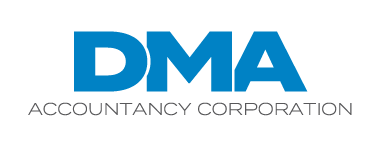The One Big Beautiful Bill Act (OBBBA) introduces a new — but temporary — tax break for manufacturers. The qualified production property (QPP) allowance gives manufacturers a strong incentive to make capital investments in new production facilities. Here’s what you need to know.
Bonus depreciation for QPP
Generally, first-year bonus depreciation is limited to tangible property with a recovery period of 20 years or less. But the OBBBA adds Section 168(n) to the Internal Revenue Code (IRC), creating the opportunity to claim 100% first-year bonus depreciation for what it deems QPP, which previously didn’t qualify for bonus depreciation because of its 39-year recovery period.
The OBBBA defines QPP as nonresidential real property:
- Where construction began after January 19, 2025, and before January 1, 2029,
- Originally used by the taxpayer,
- Used by the taxpayer as an integral part of a qualified production activity, and
- Placed into service in the United States before January 1, 2031.
A qualified production activity refers to the manufacturing, production or refining of tangible personal property (excluding food or beverages prepared in the same building as a retail business that will sell the items). Production is limited to agricultural and chemical production. The activity must result in a “substantial transformation” of the property making the product.
Manufacturers must make an irrevocable election for the bonus depreciation treatment by identifying the QPP (or a portion of the QPP) subject to the election on their tax returns.
Additional limitations
Property a taxpayer leases out generally doesn’t qualify for QPP bonus depreciation. The exception is when the taxpayer is the party that uses the property for a qualified production activity.
Used property also might not qualify. For example, such property isn’t eligible if:
- It has been used in a qualified production activity at any time from January 1, 2021, to May 12, 2025, or
- It was previously owned by the taxpayer.
Used property is treated as acquired not later than the date on which the taxpayer enters a written binding contract for the acquisition.
QPP doesn’t include any portion of nonresidential real property used for:
- Offices,
- Administrative services,
- Lodging,
- Parking,
- Sales activities,
- Research activities,
- Software development or engineering, or
- Other functions unrelated to the manufacturing, production or refining of tangible personal property.
Bear in mind that QPP can be subject to recapture if it ceases to be used as an integral part of a production activity at any time during the 10 years after it’s placed into service or if it’s sold.
Pros and cons of accelerated depreciation
Manufacturers that have taken advantage of bonus depreciation in the past are likely aware of the benefits. For example, it can reduce taxable income, improve cash flow, offset the cost of hefty capital expenditures, and free up cash for further investment or other needs.
But accelerated depreciation isn’t always the wisest option. You might, for example, be better off depreciating QPP over multiple years if you think you’ll get bumped up to a higher tax bracket in the future. Should that happen, depreciation deductions would be more valuable.
Accelerated depreciation can also affect other tax breaks you may rely on. As noted, it reduces taxable income. If your business is a pass-through entity, reduced taxable income can translate to a smaller Sec. 199A deduction for qualified business income. Higher depreciation deductions can also impact the value of expiring net operating losses, as well as charitable contribution and credit carryforwards.
Stay tuned
Like much of the OBBBA, further clarification of the rules for QPP bonus depreciation (for example, the meaning of “substantial transformation”) will come from IRS regulations. We’ll keep you informed of any major developments.
© 2025


Recent Comments